Salinas Museum Tickets & Tours
Headout is an authorized and trusted partner of the venue, offering curated experiences to enjoy this attraction. This is not the venue's website.
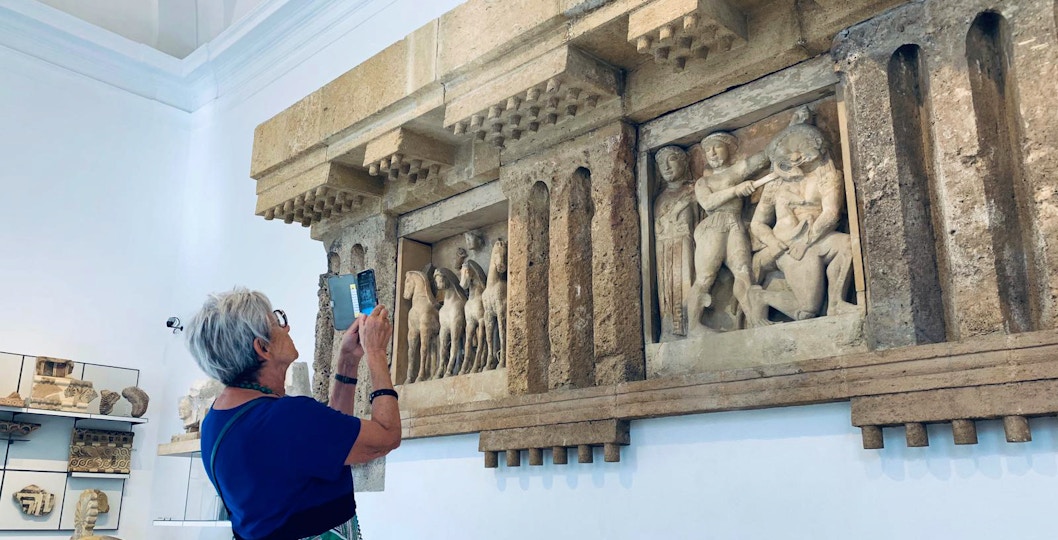
Combos
Combo (Save 5%): Palermo Hop-on Hop-off Bus Tour + Botanical Gardens + Regional Antonino Salinas Archaeological Museum Tickets
from €35
€33.25
5% off
- Save big and see more with this combo offering hop-on hop-off tour, and entry to Botanical Gardens and Antonino Salinas Archaeological Museum.
- Enjoy a 24-hour hop-on hop-off tour with unlimited access to 2 routes and 15 stops at must-see spots like English Garden and Zisa Castle.
- Delight in the multilingual audio guide on the open-top double-decker buses arriving every 30 to 60 mins. History lesson and breathtaking views of the city guaranteed.
- Explore Botanical Gardens with skip-the-line access and delve into a world of fascinating plant species and gardens like the Gymnasium and Tieneo Room.
- Discover art from ancient Greece to the late 20th century at Archaeological Museum and marvel at iconic sculptures like the Selinunte Temple metopes.
- Save big and see more with this combo offering hop-on hop-off tour, and entry to Botanical Gardens and Antonino Salinas Archaeological Museum.
- Enjoy a 24-hour hop-on hop-off tour with unlimited access to 2 routes and 15 stops at must-see spots like English Garden and Zisa Castle.
- Delight in the multilingual audio guide on the open-top double-decker buses arriving every 30 to 60 mins. History lesson and breathtaking views of the city guaranteed.
- Explore Botanical Gardens with skip-the-line access and delve into a world of fascinating plant species and gardens like the Gymnasium and Tieneo Room.
- Discover art from ancient Greece to the late 20th century at Archaeological Museum and marvel at iconic sculptures like the Selinunte Temple metopes.
Inclusions
Palermo HOHO
- 24-hour unlimited hop-on hop-off tour
- Access to Red & Blue lines
- Audio guide in Italian, English, Spanish, Japanese, French, German, Russian & Portuguese
- Free Wi-Fi & assistance on board
- Mobile app with a detailed map and live bus tracking
Botanical Gardens
- Skip-the-line entry to Orto Botanico Palermo (near stop 3 on Red line)
Archaeological Museum
- Entry to the Regional Antonino Salinas Archaeological Museum (near stop 6 on Red and Blue lines)
Please click here for a detailed route map and boarding points.
You can join the tour at any stop and hop on and off for the duration of your ticket.
Red Line
- First bus: 10am from Politeamo Theatre
- Last bus: 5pm from Politeamo Theatre
- Frequency: Every 30 mins
- Popular stops: Palermo Botanical Garden, Teatro Massimo, New Gate
Blue Line
- First bus: 12pm from Politeamo Theatre
- Last bus: 5pm from Politeamo Theatre
- Frequency: Every 60 mins
- Popular stops: English Garden, Zisa Castle, Villa Malfitano
Palermo HOHO
- The buses are wheelchair accessible (only if they are equipped with a footboard and space for wheelchair).
- Small and medium sized pets welcome onboard if they are put on a leash, muzzle or inside a carrier.
Botanical Gardens
- Tip: The gardens are a great place to spot a wide range of bird species attracted to the lush vegetation.
- Keep in mind bicycles, roller skates, balls, kites, and frisbees are not allowed in this experience. Pack wisely!
- Shutterbugs, take note: professional or commercial photography is a no-go inside the venue. Seek permission before you record the place.
- This experience is wheelchair and pram/stroller accessible.
Archaeological Museum
- Tip: Look out for temporary exhibitions or special displays happening on the day of your visit.
- These tickets can't be cancelled or rescheduled.
Reviews
How do we collect reviews?
Snapshots from our guests
4.2
270 ratings
166
48
27
15
14
What our guests say
Michael
Jun 2025Verified booking
Loved sitting up top! Clear US speaking audio guide lots of info! Loved the "Biga café" for lunch!
RAQUEL
Jun 2025Verified booking
The bus schedules were unclear and it made several stops without warning. We were not able to make the complete tour. The bus was not air conditioned and the heat was unbearable for the children.
View original review in Spanish
Bernhard
Jun 2025Verified booking
It was almost impossible to find stops after booking online. No info, no link, nothing about it. Very poor service (booked via something called "Headout").
View original review in German
Ahmed-Amine
Jun 2025Verified booking
No signposting from the port, no one to guide us to the meeting point
View original review in French
Kurt
May 2025Verified booking
It was ok, the weather was fine. We had long walks.
View original review in German
Frank
May 2025Verified booking
Great. Very easy and pleasant.
Martine
Apr 2025Verified booking
The remains are sublime and the explanations very interesting.
View original review in French
Angelina
Jul 2025Verified booking
Sylvie
Jul 2025Verified booking
MARIA
Jun 2025Verified booking
Ineke
Jun 2025Verified booking
Mario
Jun 2025Verified booking
florian
May 2025Verified booking
Yolanda
May 2025Verified booking
Lucas
May 2025Verified booking
Marina
May 2025Verified booking
Julie
May 2025Verified booking
Werner
May 2025Verified booking
Hans
May 2025Verified booking
Silke
May 2025Verified booking
DR.
May 2025Verified booking
Henrik
Apr 2025Verified booking
Sellan
Apr 2025Verified booking
Eicher-Koenig
Jul 2025Verified booking
+ The bus driver catched us up just after the stop we didn't find first. The Ticket online doesn't work to transfare in the App! After 40 min and 6 link to register I gave up. -- The Bus B Tour couldn't take us because full. the next Bus B stopded after 1 Station and told us to wait for 1 hour for the next bus. We got angry because we waited mostly instead of driving arround and hop on and off. we would not pay 40.-€ to wait mostly! we do not recommand this tour!
Condrut
Jun 2025Verified booking
Because it rained on the day of the reservation, we stayed inside the bus. The windows were covered with a sun protection net and nothing could be seen outside.
Combos
Combo: Botanical Gardens of Palermo + Regional Antonino Salinas Archaeological Museum Tickets
from
€15
- Explore Palermo's gems uniquely with skip-the-line access exclusively for the Botanical Gardens, paired with a visit to the Antonino Salinas Archaeological Museum.
- Visit to the University of Palermo's historic 1779 Botanical Garden, home to 250,000 specimens, with skip the line access.
- Explore the Gymnasium and greenhouses, and admire the stunning Aquarium in the southeast corner, a gift from the Archbishop of Palermo.
- Access one of Italy's key museums established in the 19th century and explore an array of artifacts from excavations across Sicily.
- Discover Phoenician sarcophagi dating back to the 5th century BC, Etruscan mirrors, and the world's largest collection of ancient anchors.
- Explore Palermo's gems uniquely with skip-the-line access exclusively for the Botanical Gardens, paired with a visit to the Antonino Salinas Archaeological Museum.
- Visit to the University of Palermo's historic 1779 Botanical Garden, home to 250,000 specimens, with skip the line access.
- Explore the Gymnasium and greenhouses, and admire the stunning Aquarium in the southeast corner, a gift from the Archbishop of Palermo.
- Access one of Italy's key museums established in the 19th century and explore an array of artifacts from excavations across Sicily.
- Discover Phoenician sarcophagi dating back to the 5th century BC, Etruscan mirrors, and the world's largest collection of ancient anchors.
Inclusions
Botanical Gardens
- Skip-the-line access to Orto Botanico Palermo
Antonino Salinas Archaeological Museum
- Entry to the Regional Antonino Salinas Archaeological Museum
Botanical Gardens
- Tip: Seek out the garden's exotic fruit trees, such as citrus varieties. Learn about the different fruit species and their significance in the region.
Antonino Salinas Archaeological Museum
- Tip: Visit the exhibit showcasing the world's largest collection of ancient anchors. These anchors represent different historical periods and maritime traditions.
- These tickets can't be cancelled or rescheduled.
Reviews
How do we collect reviews?
Snapshots from our guests
4.8
89 ratings
76
7
5
0
1
What our guests say
Martine
Apr 2025Verified booking
The remains are sublime and the explanations very interesting.
View original review in French
Mario
Jun 2025Verified booking
Yolanda
May 2025Verified booking
Sellan
Apr 2025Verified booking
Silvano
Apr 2025Verified booking
CONVENIENCE OF ONLINE TICKETS
View original review in Italian
BASSO
Feb 2025Verified booking
It was not specified that from 1 p.m. buses ran every hour instead of half an hour and only until 4 p.m.
View original review in Italian
Sudeshna
Oct 2024Verified booking
Sidonie
Aug 2024Verified booking
Audai
Aug 2024Verified booking
Headout Guest
Aug 2024Verified booking
Fabrizio
Jan 2024Verified booking
Great value to get the most out if Palermo less know attractions
Philippe
Aug 2022Verified booking
I thought I would benefit from a visit with an audio guide
Headout Guest
Jul 2024Verified booking
Headout Guest
Jul 2024Verified booking
Eric
Jul 2024Verified booking
Cinzia
Jun 2024Verified booking
Headout Guest
May 2024Verified booking
Headout Guest
May 2024Verified booking
Headout Guest
Apr 2024Verified booking
Headout Guest
Apr 2024Verified booking
Headout Guest
Apr 2024Verified booking
Headout Guest
Apr 2024Verified booking
Headout Guest
Mar 2024Verified booking
Headout Guest
Mar 2024Verified booking
Headout Guest
Feb 2024Verified booking
Why Visit the Salinas Museum?
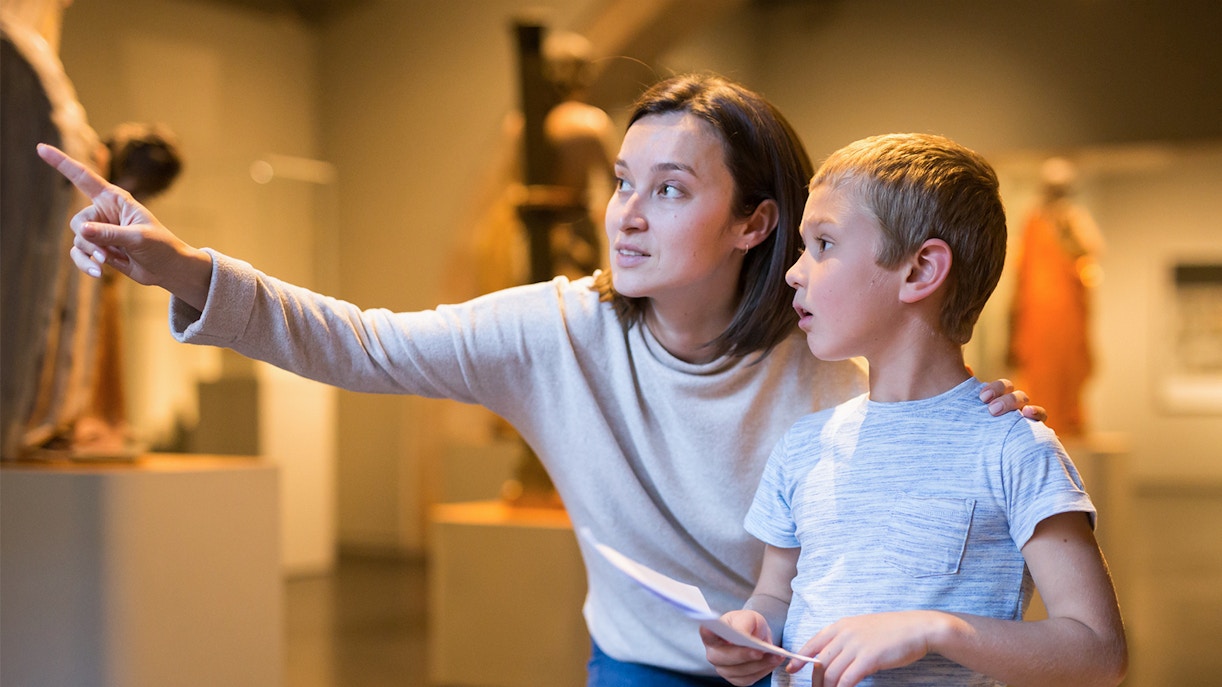
- Extensive collection: Explore a vast collection of valuable artifacts from various periods, including prehistoric, Greek, Roman, and medieval times.
- Experience unique exhibits: Experience captivating displays about town's history, spanning from its Phoenician beginnings to its Arab and Norman eras.
- Connect with the community: Connect with the locals and learn about their way of life.
- Family-friendly attraction: Engage in an exciting range of family activities and interactive exhibits.
- Historical & cultural insights: The Salinas Museum offers a unique opportunity to explore the rich history and culture of the town of Salinas in Sicily.
Your Salinas Museum Ticket Options Explained

Entry Ticket
Duration: Flexible
- Avoid the last-minute hassles and never-ending lines at the counter with advanced online booking.
- Enjoy priority access and get transported to the era that birthed art, civilization, and changed the face of architecture.
- Opt for guided tours and enrich your experience with wholesome background stories of all the significant masterpieces.
Why Book Salinas Museum Tickets Online?

- Convenience: Booking Salinas Museum tickets online lets you easily search for and compare different tickets options.
- Time-saving: You can effortlessly and instantly book your Salinas Museum tickets online.
- Customer Support: Dedicated customer support at every step via call, email, or chat, for a seamless experience.
- Best price guarantee: Online booking platforms offer competitive prices and deals.
What to See at the Salinas Museum, Palermo?
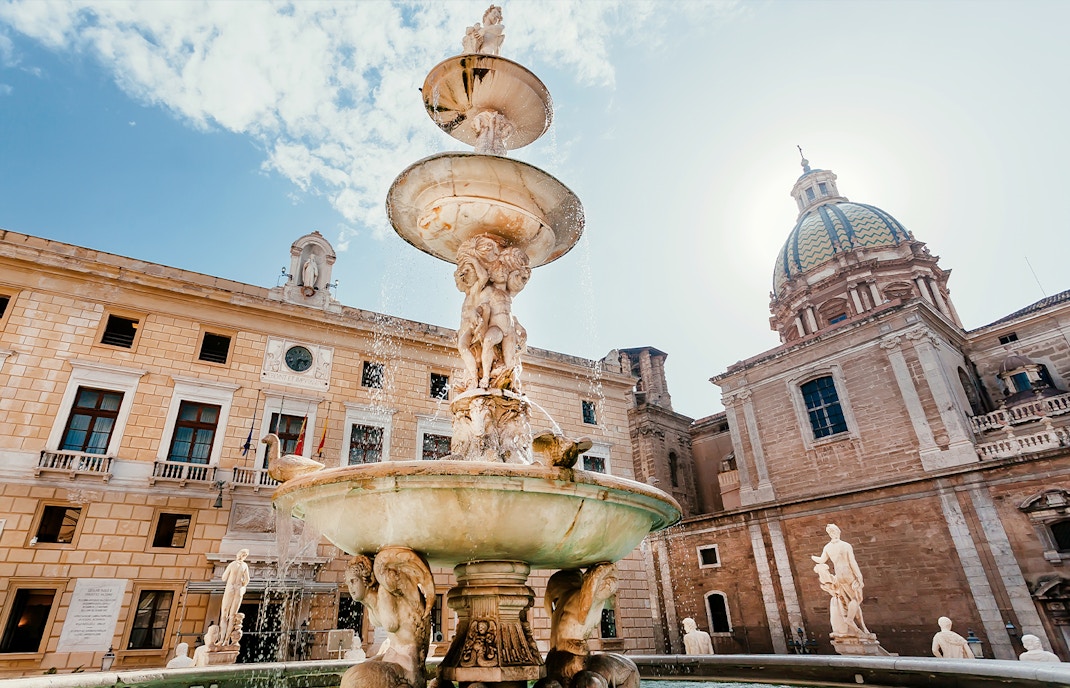
The Fountain of Triton
The fountain featuring Triton, the Greek god of the sea, was created by the Italian sculptor Francesco Camilliani in 1612. Viceroy of Sicily, Juan Alonso Herrera, later commissioned it to decorate the courtyard of the Palazzo dei Normanni in Palermo.
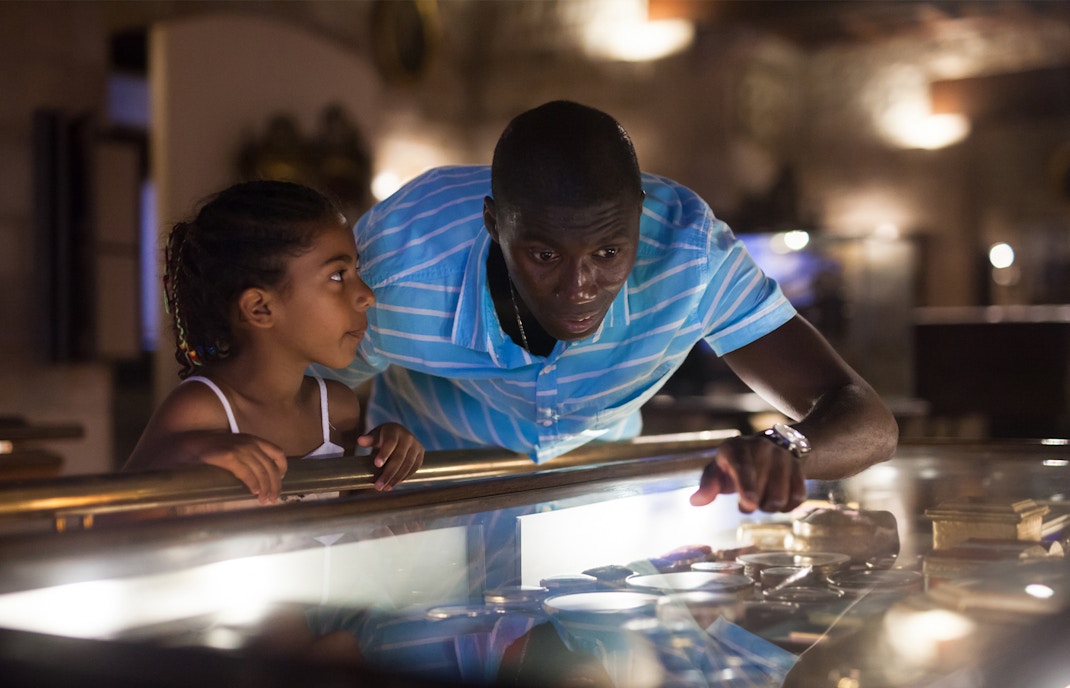
The Palermo Stone
The massive slab of black basalt is among the most important archaeological findings of the area. Its origin traces back to the Old Kingdom of Ancient Egypt( 2600 - 2200 BC). The inscriptions include the first pharaohs' names and crucial information about their reigns. It also demonstrates the evolution of Egyptian script and the language.
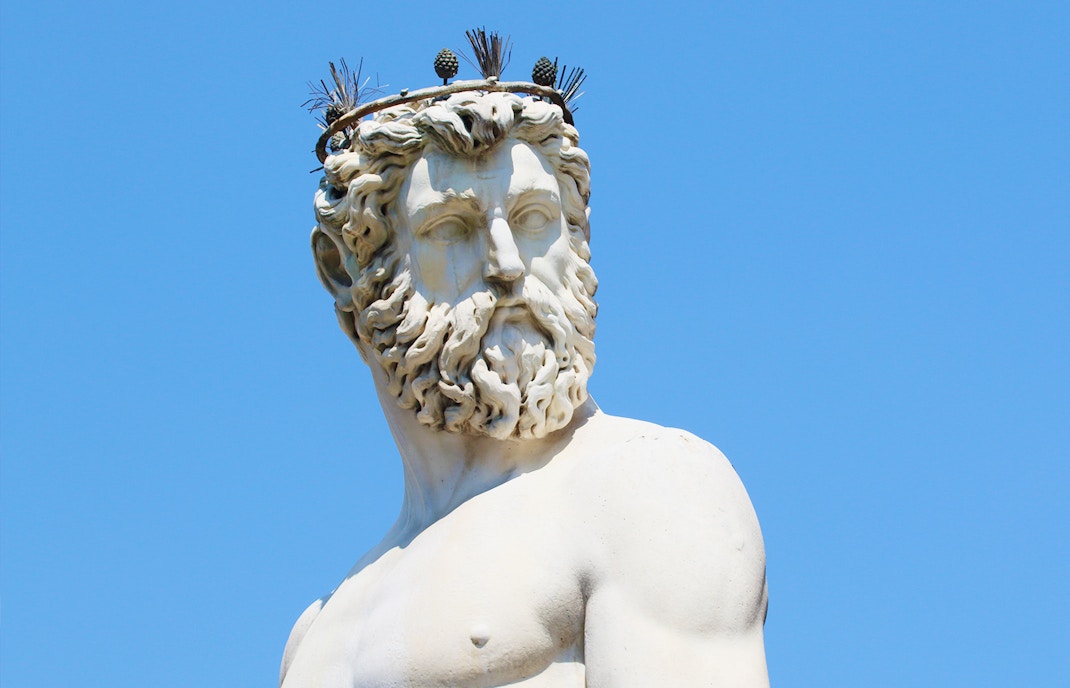
Zeus Ourios and Zeus Solunto
The former was found in La Kalsa (16th century), depicting Zeus standing with his right arm raised, holding a thunderbolt. Zeus Solunto is smaller and was found in the ancient Greek city of Solunto in northern Sicily. This one portrays Zeus standing with his left arm raised and holding a scepter in his right hand.
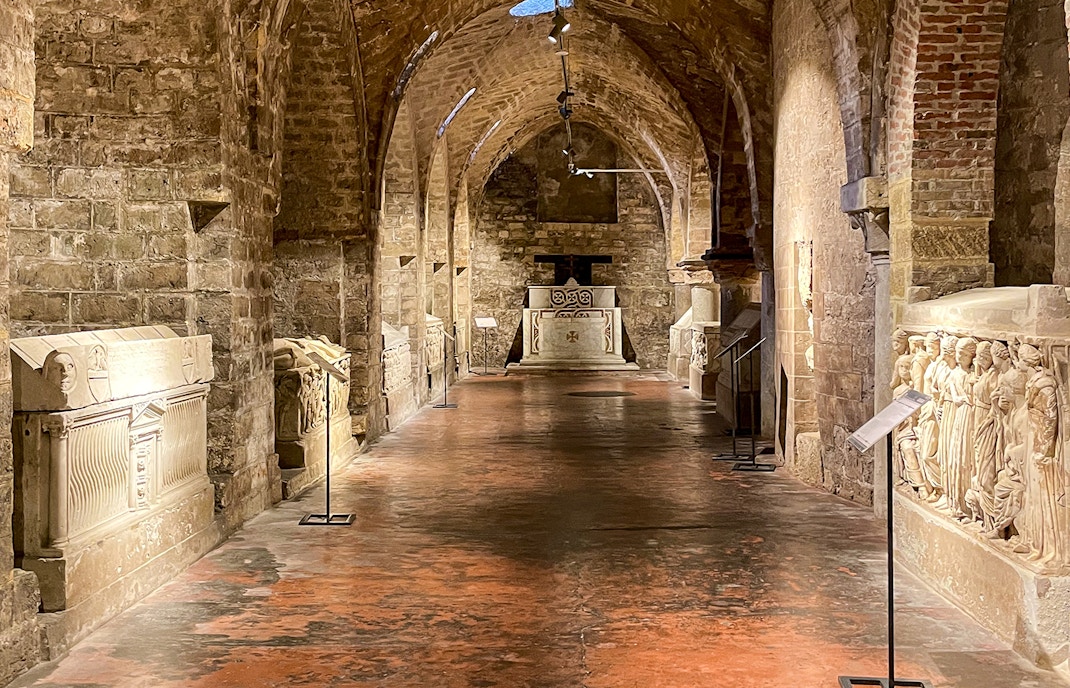
The Sarcophagi of Cannita
The group of six ancient sarcophagi was discovered in 1972 in the Cannita necropolis, an old burial site in Palermo. Relive the ancient Sicilian funerary art. Garner valuable insights into the beliefs and customs of the ancient Sicilian people, along with the artistic techniques and styles of the time.
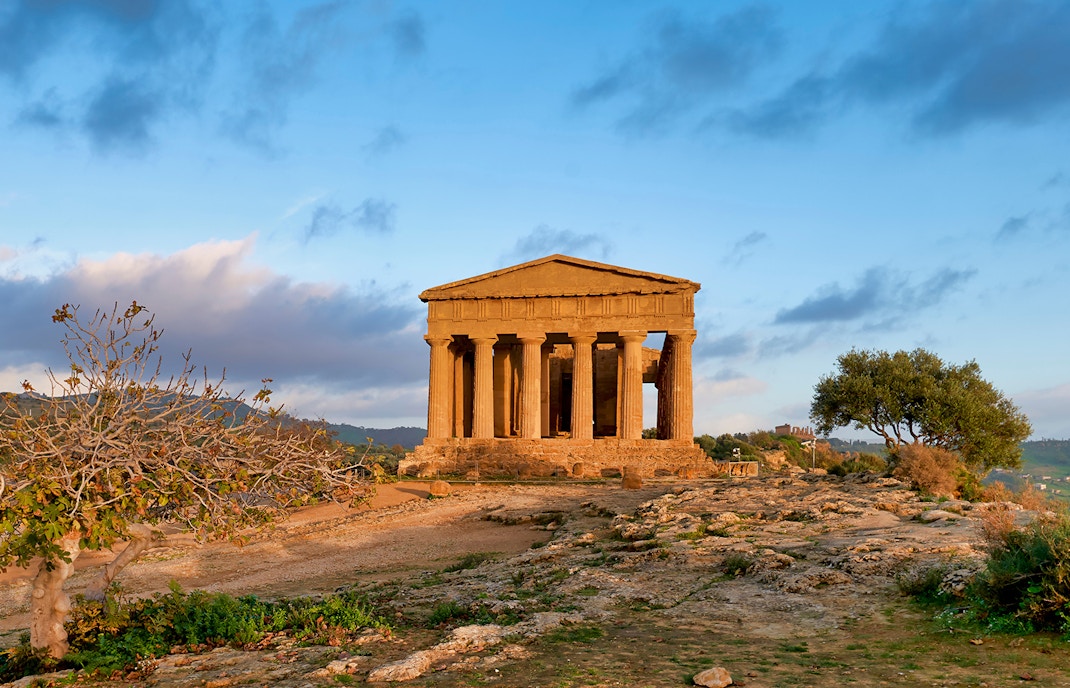
Temple C
The reconstructed temple of today was originally built in the ancient city of Selinunte dedicated to the goddess Hera but was destroyed by the Carthaginians in the 4th century BC. One look and you can experience the grandeur of one of the largest and stunning temples of ancient Greece.
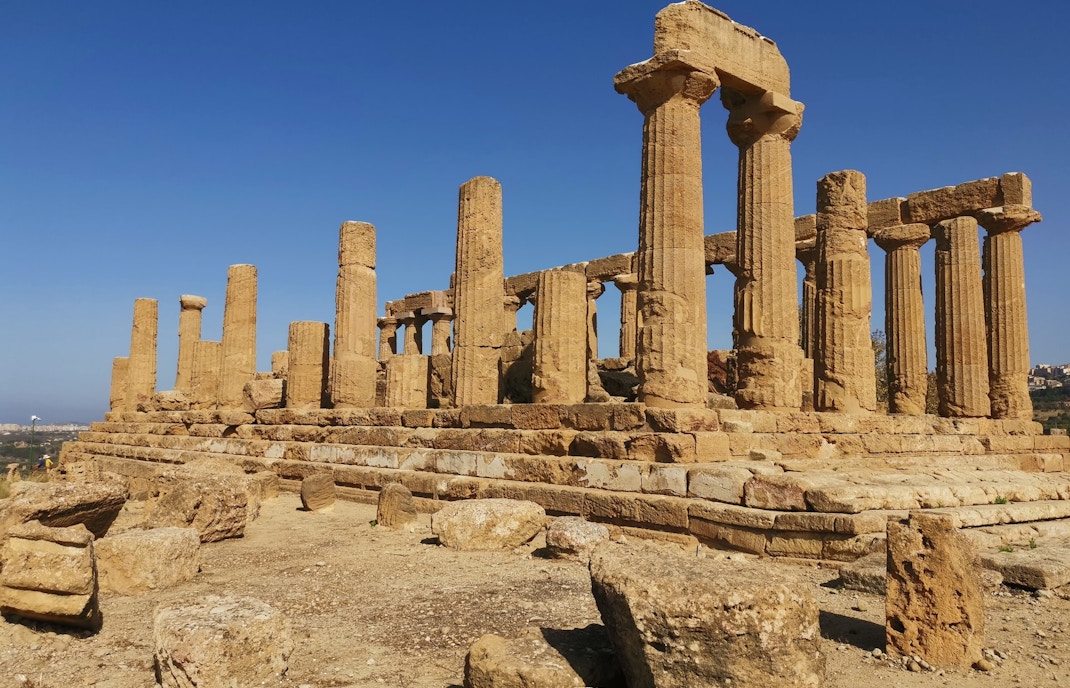
Temple E
The original Temple E was built in the 5th century BC and was one of the earliest examples of the Doric order of architecture in Sicily. The temple was similar in size and design to Temple C, and unfortunately, was destroyed at the same hands. The intricate carvings offer valuable insights into the religious beliefs of the ancient Greeks.
Plan Your Visit to Salinas Museum, Sicily
Timings
Location
Facilities
Accessibility
Eat
Stay
Visitor Tips
Nearby Attractions

- Opening Hours
Tuesday - Saturday : 9 AM – 06:30 PM
Sunday : 9 AM – 01:30 PM - Last Admission: One hour before the closing time.
- Days of Closure - Monday
- Best Time to Visit
If you enjoy warm weather and vibrant outdoor activities, then the summer months, from June to September, may be the best time to visit the museum. However, if you prefer to avoid large crowds and long lines, the off-season, from October to April, suits you perfectly.

Address: Piazza Olivella, 90133 Palermo PA, Italy
Getting There
By Bus: Take bus lines to the Piazza Indipendenza bus stop, a short walk from the museum.
By Metro: Take the Palermo metro to the Stazione Orleans stop, about a 10-minute walk from the museum.
By Car: Head towards Palermo, take the A29 highway towards Trapani, and continue until you reach the Castelvetrano exit. Follow the signs towards Castelvetrano and then towards the Salinas Museum.

- Audio Guides: Add value to your tour with audio guides available in multiple languages.
- Restrooms: Enough number of restrooms available throughout the museum, including facilities for people with disabilities.
- Museum Shop: Take back small tokens of your memories from the museum gift shop that offers a variety of souvenirs.
- Free Wi-Fi: Available throughout the museum so you stay connected while exploring the exhibits.
- Guided tours: Available for groups or even individuals, providing a more comprehensive and personalized experience.

- Wheelchair Accessibility: The museum is wheelchair accessible, with elevators and ramps available to provide access to all areas of the museum.
- Audio Guides: Available in multiple languages, including Italian, English, French, German, and Spanish, for visitors with visual impairments.
- Large Print Materials: The museum offers large print materials for visitors who have visual impairments.
- Signage: Signage throughout the museum is available in both Italian and English.
- Service animals: Service animals are offered in the museum for help.
- Restrooms: Specially accessible restrooms for people with disabilities.
- Guided tours: Guided tours can be arranged for visitors with disabilities, for a more personalized experience.

- Café del Museo: Located inside the museum , you can find this on the ground floor. The cafe offers beverages, snacks, and light meals, perfect for breaks.
- Ruvolo Ristorante: Enjoy gorgeous city views while enjoying the rich local flavors in every bite. The restaurant is a short walk from the museum.
- All'Olivella Wine 'n' Dine: Located at a walking distance of one minute, All’ OLivella Wine ‘n’ Dine has refined your typical wine n dine experience.
- FUD - Bottega Sicula: Near the museum, Bottega Sicula's carefully curated selection of local specialties will transport your taste buds straight to the heart of Palermo.
- Da Bacco: Enjoy delectable Italian cuisine made from freshest ingredients and time-honored recipes at Da Bacco, a short walk away from the museum.

- Plan Ahead: It is a large museum with many exhibits, so planning your visit always helps.
- Compulsory Online Booking: For Saturdays and Sundays and public holidays, 24 hours advance booking is mandatory.
- Wear Comfortable Shoes: There'll be a lot of walking owing to museum's multiple floors and large area, so wear comfy shoes.
- Respect the Exhibits: Follow the museum's rules, including not touching the exhibits, and avoid using flash photography.
- Take a Break: A proper museum tour can be overwhelming, so take a break to sit and relax in any one of the sitting areas through the museum.
- Consider a Guided Tour: If you're interested in learning more about the exhibits and their history, consider booking a guided tour of the museum.
- Time allotment: The Salinas Museum has many exhibits, so plan for at least a few hours to see the museum properly.
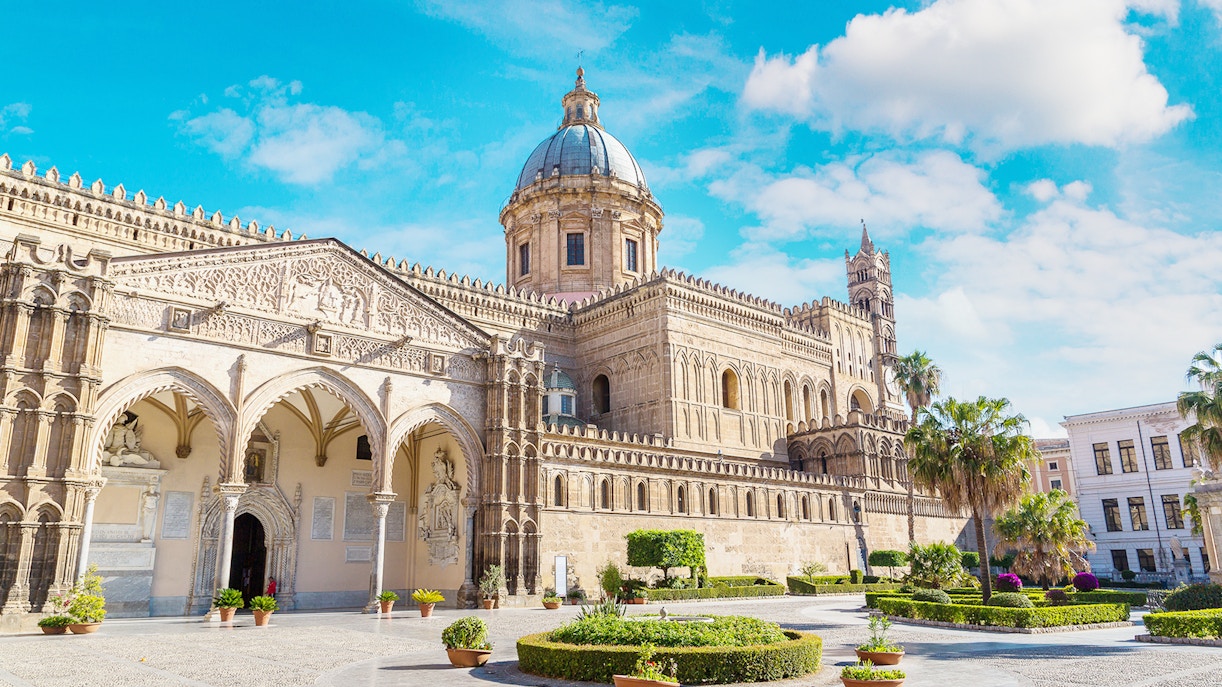
- The Cathedral of Palermo: A stunning example of Norman architecture and houses the tombs of many notable figures from Sicilian history.
- The Catacombs of the Capuchins: Home to thousands of mummified bodies, including some of the most well-preserved examples in the world.
- The Massimo Theatre: The largest opera house in Italy and is known for its stunning acoustics and beautiful architecture.
- The Palazzo dei Normanni: Norman Palace is the oldest royal palace in Europe and is home to the famous Palatine Chapel.
- The Church of San Giovanni degli Eremiti: A stellar testament of Arab-Norman architecture and is known for its beautiful red domes.
Frequently Asked Questions About Salinas Museum Tickets
Where do I buy Salinas Museum tickets?
You can purchase Salinas Museum tickets online or in person at the museum ticket counter. We recommend purchasing tickets in advance online to avoid any potential wait times or sold-out days.
Are Salinas Museum tickets available online?
Yes, Salinas Museum tickets are available online.
How much do Salinas Museum tickets cost?
Salinas Museum tickets start from €6 for standard admission. Please note that ticket prices may fluctuate, so it's best to check the real-time availability and prices by exploring our curated collection of experiences.
What is included in my Salinas Museum tickets?
Your Salinas Museum ticket includes access to all exhibits, collections, and public spaces, which showcase the town's history, culture, and heritage.
Can I buy Salinas Museum tickets in advance?
Yes, you can buy Salinas Museum tickets in advance. Booking tickets in advance allows you to skip the ticket queue and ensure that you get to visit the museum on your preferred date and time.
What is the cancellation policy for the Salinas Museum tickets?
Unfortunately, Salinas Museum tickets cannot be canceled or rescheduled once they are purchased. It's essential to ensure that you choose the correct date and time when purchasing tickets online to avoid any disappointment. If the museum has to close unexpectedly due to unforeseen circumstances, visitors may be entitled to a refund or a rescheduled visit at the museum's discretion.
How long are my Salinas Museum tickets valid for?
Your Salinas Museum tickets are valid for the entire day, which means you can visit the museum's exhibits, collections, and public spaces at your own pace.
Who can avail discounted tickets to the Salinas Museum?
Children aged 0-17 years can enter the Salinas Museum for free, but they must carry a valid photo ID as proof of age.
Is the Salinas Museum wheelchair accessible?
Yes, the Salinas Museum is wheelchair accessible. The museum provides accessible entrances, elevators, and restrooms for visitors with mobility issues.
Is the Salinas Museum worth visiting?
The Salinas Museum is worth a visit for anyone interested in ancient history, Salinas culture, archaeology, or art. The museum's exhibits provide a fascinating insight into the town's unique character and heritage, and its extensive collection of artifacts from various periods is sure to captivate history buffs. The museum is also family-friendly, with interactive exhibits and engaging activities for children.














